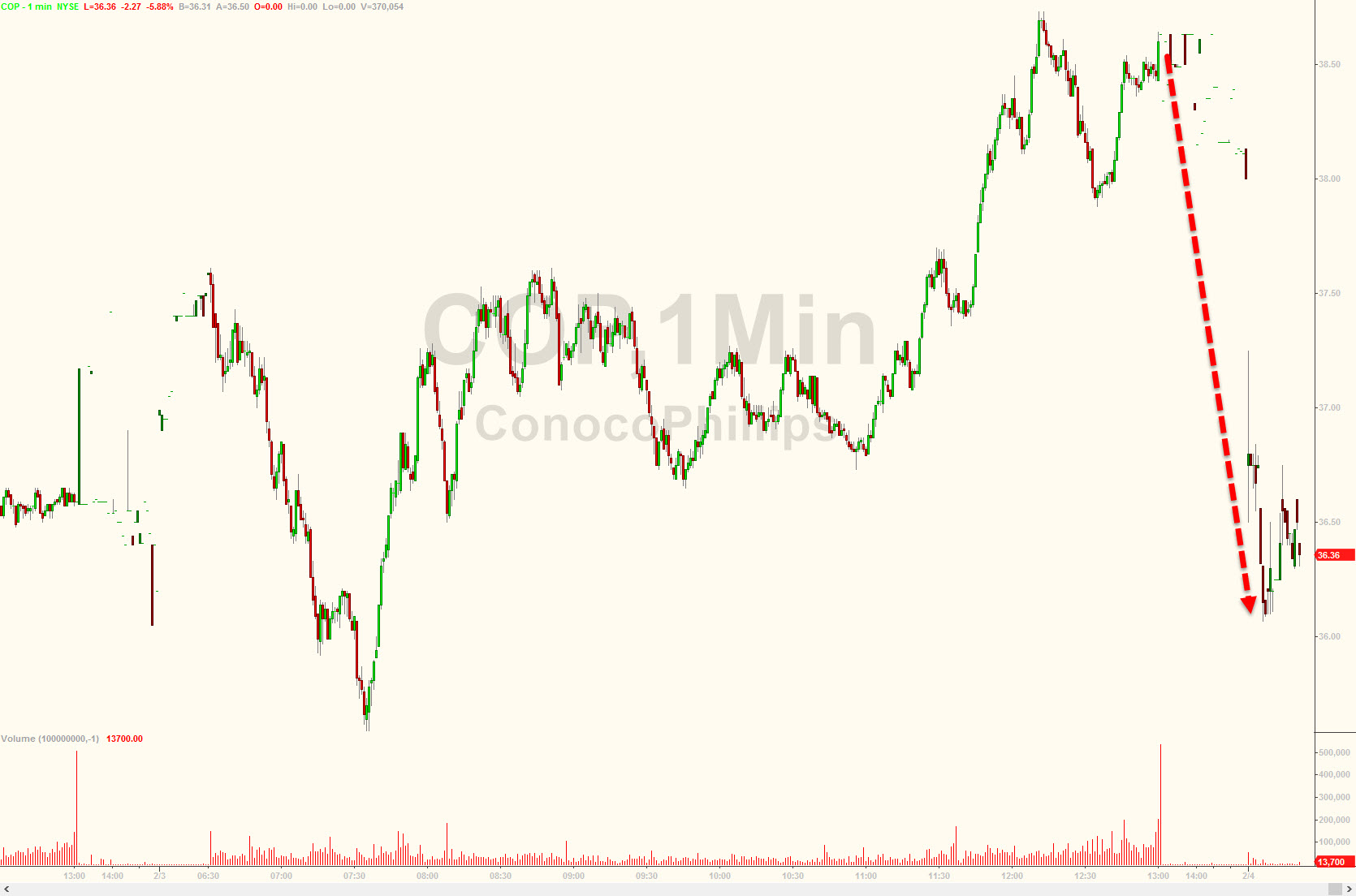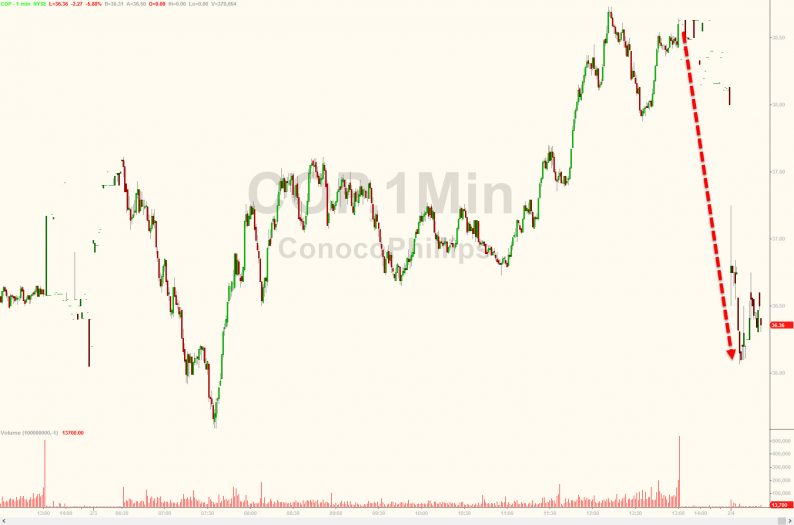Another day, and another round of increasingly uglier news from the global energy sector.
Moments ago, energy giant ConocoPhillips (COP) announced it would cut the company’s quarterly dividend to 25 cents per share, compared with the previous quarterly dividend of 74 cents per share. This took place after reporting its biggest quarterly loss in almost a decade as independent oil producers feel the squeeze from the sharp decline in crude prices.
The company also lowered capital expenditures guidance to $6.4 billion from $7.7 billion and operating costs guidance to $7 billion from $7.7 billion.
The commentary from CEO Ryan Lance was dire: “While we don’t know how far commodity prices will fall, or the duration of the downturn, we believe it’s prudent to plan for lower prices for a longer period of time.”
“The actions we have announced will improve net cash flow by $4.4 billion in 2016. The decision to reduce the dividend was a difficult one. The dividend has been, and will continue to be, a top priority. We still intend to provide a competitive dividend, while significantly lowering the breakeven price for the company and substantially reducing the level of borrowing in 2016. Our actions also position us to deliver strong absolute and relative performance as prices recover.”
The company had previously emphasized it would prioritize maintaining the dividend while being more flexible with capital spending and the balance sheet.
As quoted by Bloomberg, “The pressure obviously built up on them,” said James Sullivan, an analyst at Alembic Global Advisors, who has an “overweight” rating on the share.. “The assumption a lot of us made was that the dividend is not sustainable.”
The stock was clearly surprised by the announcement, and was down over 5% in the premarket.

Elsewhere, another energy giant Weatherford International (WFT) assured that next month’s Challenger report would also be ugly, when it announced plans to lay off an additional 6,000 workers, about 15 percent of its workforce, over the first half of this year to cope with the worst crude market downturn in 30 years.













Leave A Comment